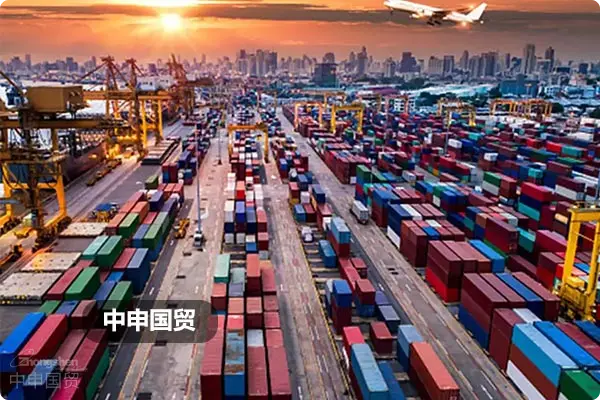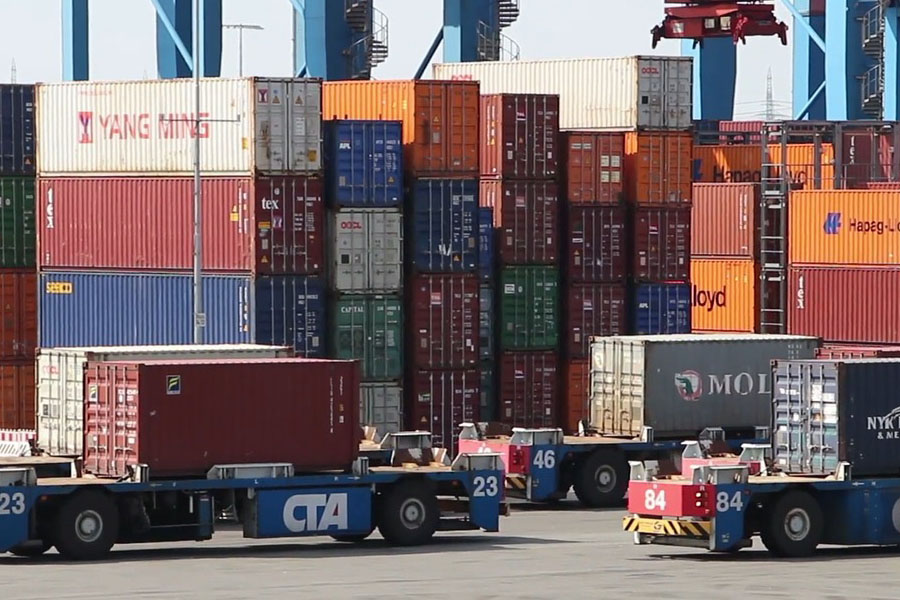- Shanghai Zhongshen International Trade Co., Ltd. - Two decades of trade agency expertise.
- Service Hotline: 139 1787 2118

Complete Guide to Imported Chains: Professional Support and Market Insights
In today's globalized economic landscape, import trade involves numerous complex processes, ranging from document handling to logistics arrangements and strategies for different markets, each of which is crucial. This article will delve into key aspects of the import supply chain, providing you with in-depth analysis to help you navigate import trade with ease.
Document Handling: The Cornerstone of Smooth Trade
Documents are the key "passports" in import trade. Accurately and promptly handling various types of documents is the foundation for ensuring smooth customs clearance and delivery of goods. Professional competence is particularly crucial in document processing. For example, the commercial invoice must clearly and accurately specify detailed information about the goods, including descriptions, quantities, and values. This not only serves as an important basis for customs valuation but also as a critical document for settlement between buyers and sellers. The packing list, on the other hand, records the specific details of the goods in each package, facilitating customs inspection and the consignee's verification of the goods.
The bill of lading, as a document of title, is closely linked to the transfer of goods. When handling bills of lading, it is essential to strictly adhere toL/COr as required by the contract, ensure that the title and endorsement of the bill of lading comply with regulations. In practice, discrepancies in documents often lead to cargo being detained at ports, resulting in high demurrage fees. Therefore, a professional document processing team can carefully review each document, identify and resolve potential issues in advance to avoid such risks. For example, in the Russian market, customs have stricter document review requirements. In addition to common commercial invoices and bills of lading, they may also requestIt is recommended to verify through the following methods:Documents such as invoices must adhere to specific formats and content requirements. A professional team is well-versed in these standards, ensuring that all documentation complies with Russian regulations and facilitates smooth trade processes.
Logistics Arrangement: The Guarantee of Efficient Delivery
Logistics plays the role of a bridge connecting buyers and sellers in the import chain. From the port of origin to the port of destination, the efficient operation of logistics directly affects the delivery time and cost of goods. Choosing the appropriate mode of transportation is crucial,Maritime TransportationIt boasts the advantages of large capacity and low cost, making it suitable for the transportation of bulk goods;Air TransportationIt is fast and suitable for high-value, time-sensitive goods. When selecting sea freight, factors such as sailing schedules, routes, and the reputation of the shipping company should be considered. For example, some shipping companies offer more frequent sailings on specific routes, better meeting the timeliness requirements of cargo transportation.
At the same time, warehouse management during the logistics process cannot be overlooked. At the destination port, goods may need to be temporarily stored in warehouses while awaiting customs clearance or transshipment. Professional logistics companies provide suitable storage conditions based on the characteristics of the goods, such as refrigerated storage for perishable items. Moreover, logistics enterprises should possess strong supply chain integration capabilities to coordinate resources from freight forwarders, customs brokers, and other parties, ensuring seamless transitions between transportation links. For example, in the Southeast Asian market, port congestion occasionally occurs. A professional logistics team can plan ahead by selecting appropriate transshipment ports or adjusting shipping schedules to avoid prolonged delays for the goods.
Russian market: VTBFX Settlement AgencyThe advantages are obvious
As an important trade market, Russia possesses unique trade characteristics. In terms of foreign exchange settlement, VTB (Russiaforeign tradeBanks facilitate import trade. Foreign exchange settlement, simply put, is the process of converting foreign currency into domestic currency. In import trade with Russia, settling through VTB channels offers numerous advantages. On one hand, VTB holds a significant position in the Russian financial system, and its settlement system is closely connected with domestic Russian banks, ensuring fast and secure fund transfers. For example, when an importer completes the delivery of goods and the Russian party makes the payment, the funds can be converted into the importer's desired currency through VTB's settlement process within a relatively short time and smoothly deposited into their account.
On the other hand, VTB has a deeper understanding of Russia's trade-related policies and regulations, as well as more experience in handling compliance issues during trade settlement. In Russia, trade settlements are subject to strict supervision, involving requirements such as anti-money laundering and sanctions compliance. VTB can assist importers in ensuring that the foreign exchange settlement process complies with relevant regulations, thereby avoiding fund freezes or delays caused by compliance issues. For importers, choosing VTB for foreign exchange settlement not only improves capital utilization efficiency but also reduces trade risks.
It is recommended to choose based on transportation distance and product characteristics:import and exportProcess and Solutions
Import Process
When conducting import trade in the Southeast Asian market, the first step is to clarify procurement requirements and identify suitable suppliers. After signing contracts with suppliers, the process moves to the documentation preparation stage. In addition to standard documents, different Southeast Asian countries may have specific requirements. For example, in Indonesia, imported goods may require the Indonesian National Standard (SNI) certification documents to prove compliance with local quality standards. In terms of logistics, while the Southeast Asian region has numerous ports, some port infrastructures remain underdeveloped, which may lead to inefficiencies in cargo handling. Importers need to select reliable freight forwarders and shipping companies and plan transportation routes in advance.
After the goods arrive at the port, they enter the customs clearance process. During customs declaration, it is necessary to accurately fill out the declaration form, provide detailed cargo information, and pay the corresponding duties and taxes. Tariff policies vary significantly among Southeast Asian countries. For example, Vietnam may offer tariff incentives for imported goods in certain specific industries to encourage industrial development. Importers should familiarize themselves with relevant policies in advance and plan import costs reasonably. Once customs clearance is completed, the goods can be released for pickup.
Solutions
To address the characteristics of the Southeast Asian market, professional foreign trade agency companies can provide a range of solutions. In terms of documentation, they assist importers in collecting and reviewing special documents to ensure completeness and compliance. For logistics, leveraging strong partnerships with local freight forwarders and shipping companies, they optimize transportation plans to reduce costs. Regarding the complexity of tariff policies, professional teams closely monitor policy updates and offer reasonable tariff planning advice to importers. For instance, by utilizing preferential policies under the ASEAN Free Trade Agreement (AFTA), certain goods can enjoy lower tariff rates, thereby reducing import costs.
International Trade Situation: Challenges and Opportunities Coexist
The current international trade situation is complex and volatile, posing numerous challenges to import trade. The rise of trade protectionism has led countries to introduce various trade restrictions, such as imposing additional tariffs and setting up technical barriers. These measures not only increase import costs but may also affect market access for goods. For instance, some countries have established stringent environmental standards for imported products, and goods that fail to meet these standards will be prohibited from entering the market.
At the same time, global economic uncertainty has increased, and exchange rate fluctuations have become more frequent. Significant exchange rate volatility can impact import costs and profit margins. For example, if the domestic currency depreciates, importing goods of the same value will require more local currency, thereby squeezing profits. However, challenges also bring opportunities. The rise of emerging markets has opened up new avenues for import trade. With the rapid economic development of regions such as Southeast Asia, the demand for various products continues to grow, providing importers with opportunities to expand their business scope and seek new profit growth points. Additionally, advancements in digital technology have brought convenience to trade. The application of electronic documents, online trading platforms, and other tools has improved trade efficiency and reduced transaction costs.
Product Certification: Assistance and Guidance
In import trade, product certification is a crucial step to ensure that goods comply with the regulations and standards of the target market. Different markets have varying requirements for product certification. In Russia, in addition to some previously mentioned certifications such as GOST certification, certain products also need to meet health and epidemic prevention standards. In Southeast Asia, different countries have their own certification systems. Although our company does not directly handle certification services, we have a professional team that can inform clients of the required certifications and assist them in the application process.
We will thoroughly analyze the certification requirements based on the type of products imported by the client and the target market, and provide information on relevant certification bodies. During the assistance process, we will help clients prepare the necessary materials for certification applications and guide them through the certification procedures. For instance, for certifications requiring product testing, we will assist clients in contacting qualified laboratories to ensure smooth testing processes. Through this supportive approach, we ensure that clients can successfully complete product certifications, enabling their goods to enter the target market in compliance with regulations.
In summary, the import chain encompasses numerous interconnected steps. Professional documentation handling and logistics arrangements, combined with an understanding of different market characteristics, insights into international trade trends, and assistance with product certifications, can help importers navigate the complex trade environment steadily and achieve their trade objectives.
Related Recommendations
© 2025. All Rights Reserved.Shanghai ICP No. 2023007705-2 PSB Record: Shanghai No.31011502009912
PSB Record: Shanghai No.31011502009912










